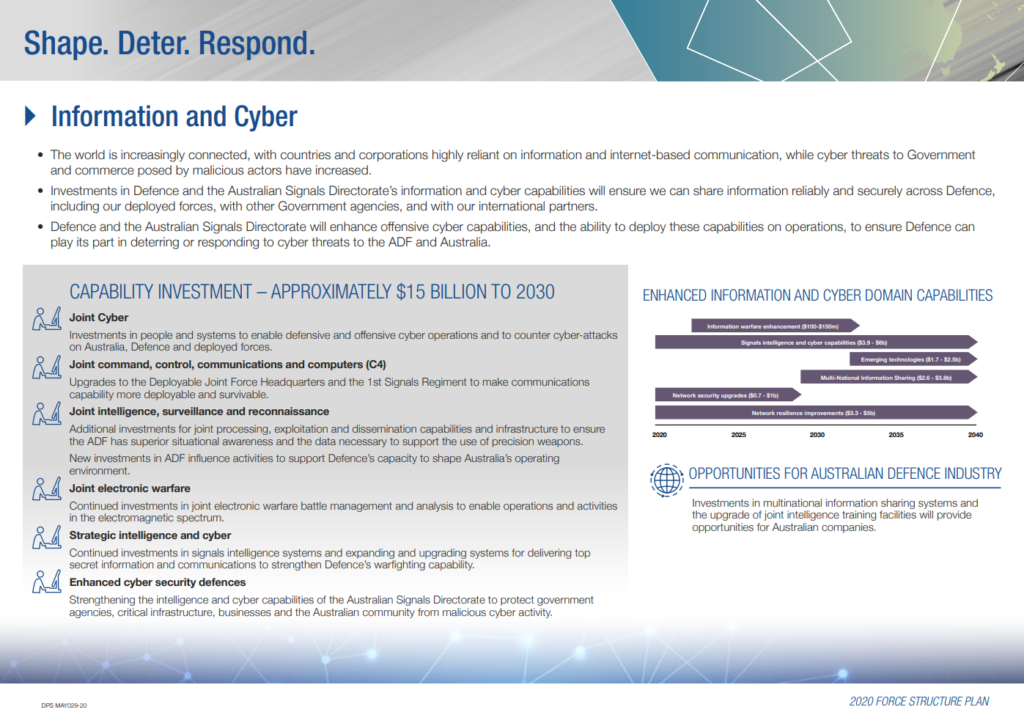Defence is becoming more reliant on fast, reliable and secure internet based communications. But the threat to this connectivity from malicious actors is also growing. There has been a marked increase in cyber-attacks against Australia by foreign actors and criminals.
Secure and resilient information systems are essential to Defence’s ability to conduct operations. The Government’s plans for investments in Defence’s information warfare capabilities in the Information and Cyber domain are critical to ensure information can be securely and reliably shared across Defence, with other Government agencies, and with international partners. Future planned investments will protect Defence in cyberspace and enable operations against adversary systems. These plans include investments in offensive cyber and operational cyberspace capabilities for deployed forces.
In addition to cyber capabilities, the Government plans to make additional investments in enhanced information and electronic warfare systems, and in improved joint command, control and communications systems to strengthen Defence’s warfighting capability. Proposed investments would improve network security and resilience, and the capacity to share information with international partners.
Furthermore, Defence intelligence capability will be bolstered with funding to integrate intelligence, surveillance and reconnaissance programs and data, and continued investment in signals intelligence capabilities. Funding will be set aside to ensure Defence remains competitive in the future as emerging technologies, such as artificial intelligence, arise in this domain.
The total program of investment in strengthened Information and Cyber domain capabilities is expected to comprise approximately $15 billion over the next decade. $470m has specifically been committed to growing Australia’s cyber workforce. Local South Australian organisation, the Australian Cyber Collaboration Centre (A3C) (pictured, right), is championing collaboration, innovation, entrepreneurship and enterprise within Australia’s cyber security community. A3C’s facilities include a cyber academy, cyber test range facility, physical spaces for collaboration, infrastructure to support product testing, and access to training courses. A key focus of A3C is to provide best-practice, full-spectrum cyber courses to quickly train and increase the supply of skilled workers to the cyber security industry – expected to provide between 5,000 and 7,000 new jobs in SA over the next 5 years.
In an environment where threats to connectivity are becoming more prevalent, the ability of the ADF to operate in a contested, congested and degraded communications environment forms the foundation of joint cyber effects. Investment in joint cyber provides strategic response options for Government in the increasingly important information-enabled environment, complementing the capability of the Australian Signals Directorate. This requires cyber capabilities able to exploit and attack adversary information networks, while protecting our own networks, mission systems and platforms across the tactical to strategic spectrum. This program provides the systems to enable Defence to conduct defensive and offensive cyber operations against a range of adversaries for military purposes, and to effectively counter cyber attacks on Australia, on Defence, and on deployed forces.
Investments in multinational information sharing systems and the upgrade of joint intelligence training facilities will also provide opportunities for Australian companies.


